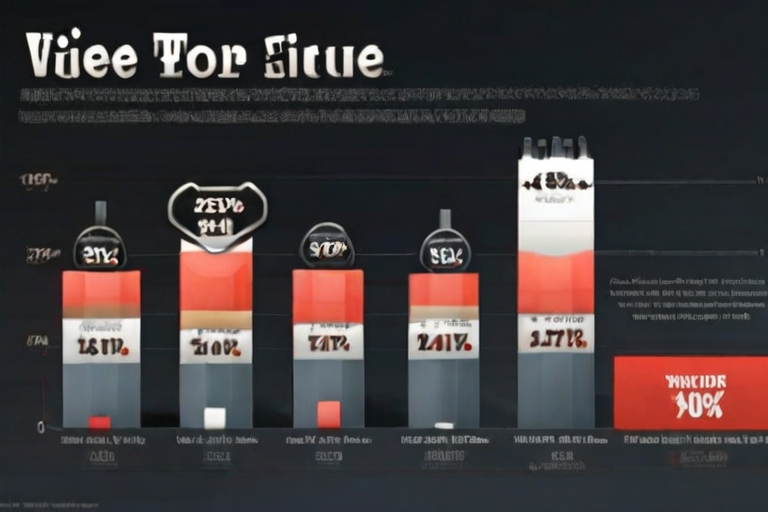Boosting user experience and SEO with site search autocomplete features can significantly enhance your website’s effectiveness. These features not only help users find what they need quickly but also improve your site’s visibility in search engine rankings. At Metrics Rule, we understand that implementing effective autocomplete strategies can drive higher user engagement and satisfaction. By optimizing site search functionalities, you can create a seamless experience that meets both user needs and SEO goals.
Defining Site Search Autocomplete Features
Site search autocomplete features provide users with real-time suggestions as they type in a search box. These features enhance user experience by making searches quicker and more accurate. Users benefit from instant access to related keywords and phrases, which can help them find what they are looking for without any delays. This also enhances SEO performance, as optimized autocomplete suggestions can lead to higher engagement rates. Research shows that nearly 30% of users take advantage of autocomplete suggestions, ensuring they refine their searches effectively.
How Site Search Autocomplete Improves Efficiency
Site search autocomplete significantly improves efficiency by reducing the time users spend searching for information. It delivers relevant suggestions tailored to their input, which helps them find products or content quickly. An efficient search experience can drastically lower bounce rates, boosting user satisfaction and increasing the likelihood of conversions. When users see relevant autocomplete suggestions, they often engage more with the content, enhancing overall website performance.
Impact of User Experience on Online Sales
User experience plays a pivotal role in shaping purchase decisions in online shopping. A seamless and intuitive user experience increases users’ trust and reliability in your e-commerce site. Key features like optimized site search functionality help maintain user engagement and significantly boost e-commerce conversion rates. Research shows that 70% of consumers abandon their carts due to frustrations like slow site performance or complicated checkout processes. Thus, ensuring a smooth search experience not only enhances user satisfaction but also directly influences overall sales outcomes.
Key Features of Site Search Functionality for E-Commerce
Essential features of site search functionality include autocomplete suggestions, tailored search results, and advanced filtering options. These features enhance the shopping experience by making it easier for customers to find desired products quickly. By providing reliable search results, users stay engaged, leading to higher conversion rates. Implementing AI-driven search algorithms can further personalize product recommendations, ensuring the user feels valued. This strategic combination of user-friendly design and functional efficiency creates a powerful impact on online shopping, ultimately driving greater sales in e-commerce platforms.

Benefits of Autocomplete in Search Functionality
Autocomplete features significantly enhance search efficiency by suggesting relevant keywords and phrases as users type. This functionality reduces the time taken to complete searches and improves the accuracy of results. For instance, an ecommerce site search can suggest related products based on initial user input, ensuring that users quickly find what they need. In various industries, including travel or real estate, autocomplete features can show specific destinations or properties, which streamlines the search process. In fact, studies indicate that implementing autocomplete can increase search speed by over 30%, providing users with a more efficient experience that meets their immediate needs.
Real-World Applications of Autocomplete Features
Autocomplete features have proven effective across numerous sectors, especially in ecommerce site search. They enable users to see popular products and frequently searched terms, enhancing customer engagement and conversion rates. For example, a site might suggest “wireless headphones” after a user starts typing “wireless,” leading to quicker access to in-demand items. By providing immediate suggestions, these features enhance user experience and ensure visitors efficiently navigate the site. Furthermore, implementing such enhancements can lead to increased customer satisfaction ratings and overall website performance, proving their value in the competitive digital landscape.
Key Statistics on Autocomplete Search Features
- 30% of users who access site search use autocomplete suggestions.
- Searchers are 2.6 times more likely to convert with autocomplete features in place.
- 60% of visitors expect instant search results and suggestions on e-commerce sites.
- Autocomplete features can reduce search queries by up to 50%.
- Implementing these features can increase user engagement by 15% or more.
- Websites with autocomplete capabilities improve the average time spent by users by 30 seconds.
- Over 40% of users abandon their search if they do not see autocomplete results.

Linking Autocomplete Features to SEO Success
Autocomplete features greatly enhance user experience and influence search rankings. By suggesting keywords and phrases, they keep users engaged as they search. When visitors find what they need quickly, they are likely to stay on the site longer, thus improving engagement rates. To optimize these features, brands should implement best practices such as streamlined performance, ensuring data reliability, and conducting A/B testing. Research shows that businesses can experience user engagement increases of up to 25% after integrating effective autocomplete features, making them an essential part of any SEO strategy.
Best Practices for Autocomplete Features in E-commerce
Implementing best practices for autocomplete features is crucial for successful site search optimization. Begin by ensuring that suggestions are relevant and reflect the most common searches. Use analytics to determine popular keywords and phrases that visitors typically enter. Additionally, it’s important to include real-time suggestions that update as users type, enhancing search algorithm efficiency. Regularly test and review the autocomplete experience to ensure it remains effective, providing reliable data and insights to improve future iterations.

Implementing Autocomplete Features on Your Website
To successfully integrate autocomplete features on your website, essential coding practices include using efficient algorithms to suggest relevant keywords based on user input. Developers should also consider implementing responsive web design principles to ensure optimal functionality across devices. Common implementation challenges encompass handling large datasets, managing server load, and ensuring quick response times for users. Testing the system is crucial, as it helps track and analyze user interactions, leading to improved performance and enhanced user experience in e-commerce settings.
Testing Strategies for Autocomplete Features
Effective testing strategies for autocomplete features include A/B testing, usability testing, and performance benchmarks. A/B testing allows you to compare different implementations, assessing which one delivers better results. Usability testing provides insights into how users interact with the autocomplete suggestions, helping to enhance the overall experience. Performance benchmarks focus on ensuring that the autocomplete feature can handle a significant number of concurrent users, crucial for e-commerce websites. By applying these strategies, you significantly improve technical optimization and ensure that users find what they need quickly and efficiently, contributing positively to SEO efforts.
Advantages of Implementing Search Assist Tools
- Website visitors find relevant content faster, enhancing user satisfaction.
- Search metrics improve, leading to better search performance and visibility.
- Autocomplete features reduce user frustration during searches.
- These tools can increase the likelihood of returning users and repeat visits.
- They help users discover new products, increasing overall sales potential.
- Businesses can gather data on popular search terms to refine content strategies.
- Integrating these features can lead to improved conversion rates and customer loyalty.

Analyzing the Performance of Autocomplete Features
Website owners can assess the effectiveness of their site search autocomplete features by monitoring several essential metrics. Key performance indicators include click-through rates on suggestions, average session duration, bounce rates after using autocomplete, and conversion rates from search queries. Tools like Google Analytics help analyze these metrics effectively. Regular review and testing of the autocomplete functionality enable businesses to refine their features, ensuring they enhance user experience and optimize SEO performance.
Key Metrics for Evaluating Autocomplete Effectiveness
When evaluating autocomplete effectiveness, focusing on key metrics provides useful insights. Look at click-through rates to gauge user engagement with suggestions. Bounce rates can indicate the immediate effectiveness of autocomplete in retaining users. Tracking conversion rates offers a direct correlation between autocomplete uses and sales, especially in e-commerce settings, where user satisfaction significantly contributes to overall site performance. Regularly testing these metrics helps refine strategies, enabling site owners to maintain a competitive edge in SEO and user experience.
Real-World Examples of Autocomplete Success
Several businesses have effectively used site search autocomplete features to boost their user experience and enhance SEO. For instance, an e-commerce platform saw a significant increase in user engagement after integrating autocomplete, leading to a lower bounce rate. A local service provider improved their search efficiency, resulting in higher rankings on Google searches. This showcases how essential these features can be for enhancing overall website performance. Furthermore, some of these businesses reported up to a 30% increase in conversion rates after implementing autocomplete, demonstrating its reliability in driving sales.
Comparative Analysis of Autocomplete Implementations
When comparing different implementations of autocomplete features, it’s clear that user experience enhancement and SEO benefits play vital roles. The best-performing companies prioritize testing and user feedback to design their autocomplete solutions. This involves analyzing data on how users interact with the search bar and testing various keyword suggestions for relevance. As a result, businesses have seen considerable improvements in their crawling and indexing capabilities on search engines like Google and Bing. Ultimately, companies that focus on integrating reliable, efficient autocomplete features gain a competitive edge in both user satisfaction and search rankings.
Companies Leveraging Prediction Technology in Search
- Amazon offers smart search features; their tool is user-friendly but can overwhelm new users.
- Google’s autocomplete is highly efficient, providing relevant suggestions quickly.
- eBay optimizes its searches effectively, though their interface can feel cluttered.
- Walmart’s search tool is simple, but it lacks advanced features found in competitors.
- Best Buy presents product suggestions well, but their autocomplete may miss niche items.
- Target’s search function is intuitive, appealing to a broad audience, yet it can be limited.
- Shopify’s customizable search supports diverse businesses, but implementation could be tedious.
Emerging Trends in Site Search Technology
Recent advancements in site search technology significantly enhance user experience by providing faster, more reliable search results. Emerging tools utilize AI advancements to analyze user behavior, ensuring that autocomplete features offer predictive and relevant suggestions. This innovation not only improves search performance but also fosters a seamless navigation experience. Research indicates that approximately 70% of users find autocomplete features helpful when searching, validating their importance in digital marketing strategies. Website owners can leverage these trends to enhance their SEO, driving more organic traffic to their platforms.
Exploring AI and Machine Learning in Site Search
AI and machine learning play a crucial role in redesigning site search capabilities. These technologies analyze vast datasets to predict what users are searching for, enhancing the autocomplete features. This not only includes keyword optimization but also contextual understanding of users’ intentions. By implementing reliable AI algorithms, websites can deliver fast and relevant search results, improving overall user interaction. Businesses focusing on e-commerce can especially benefit from these advancements, as they offer excellent opportunities for increased conversions and customer satisfaction.
